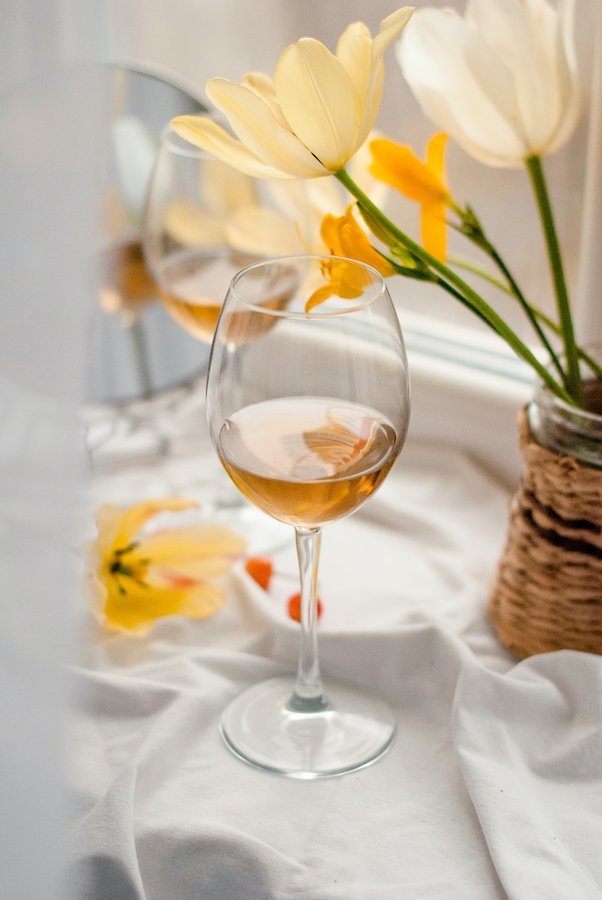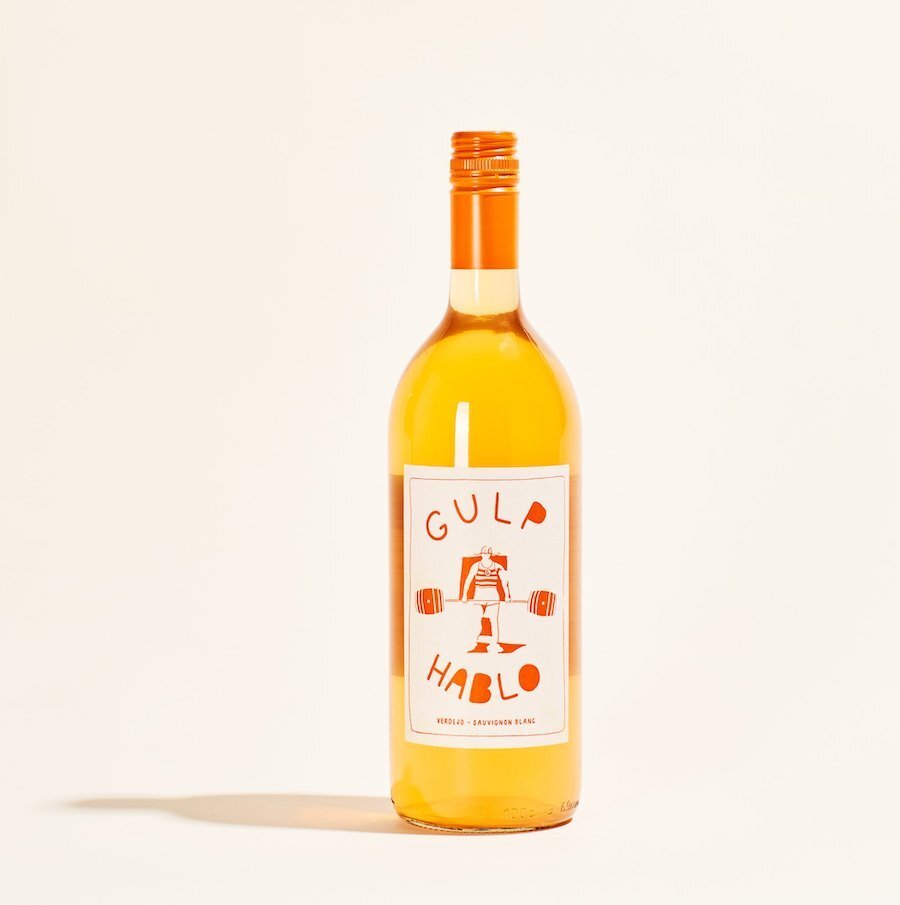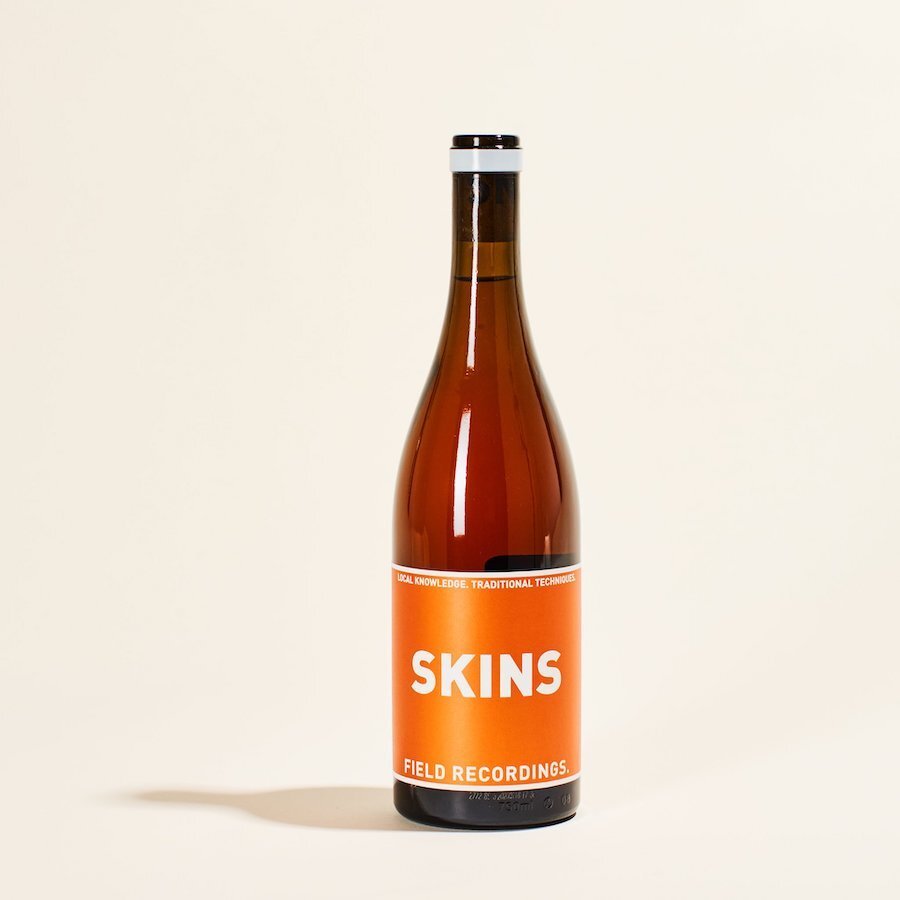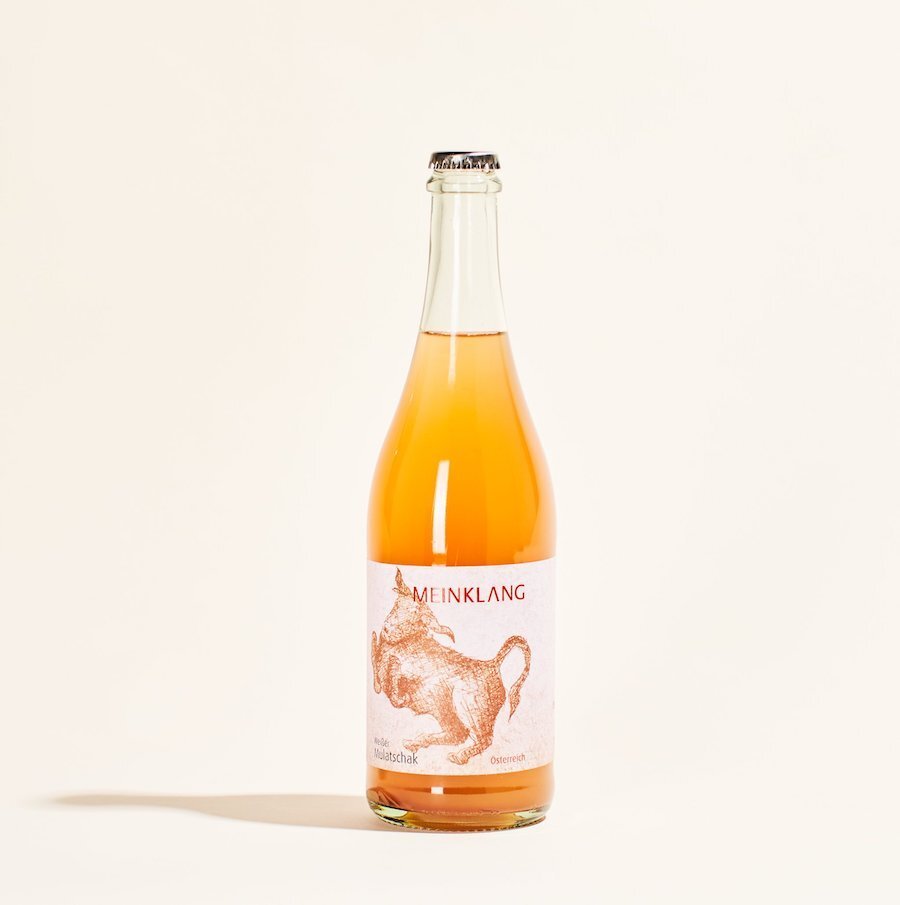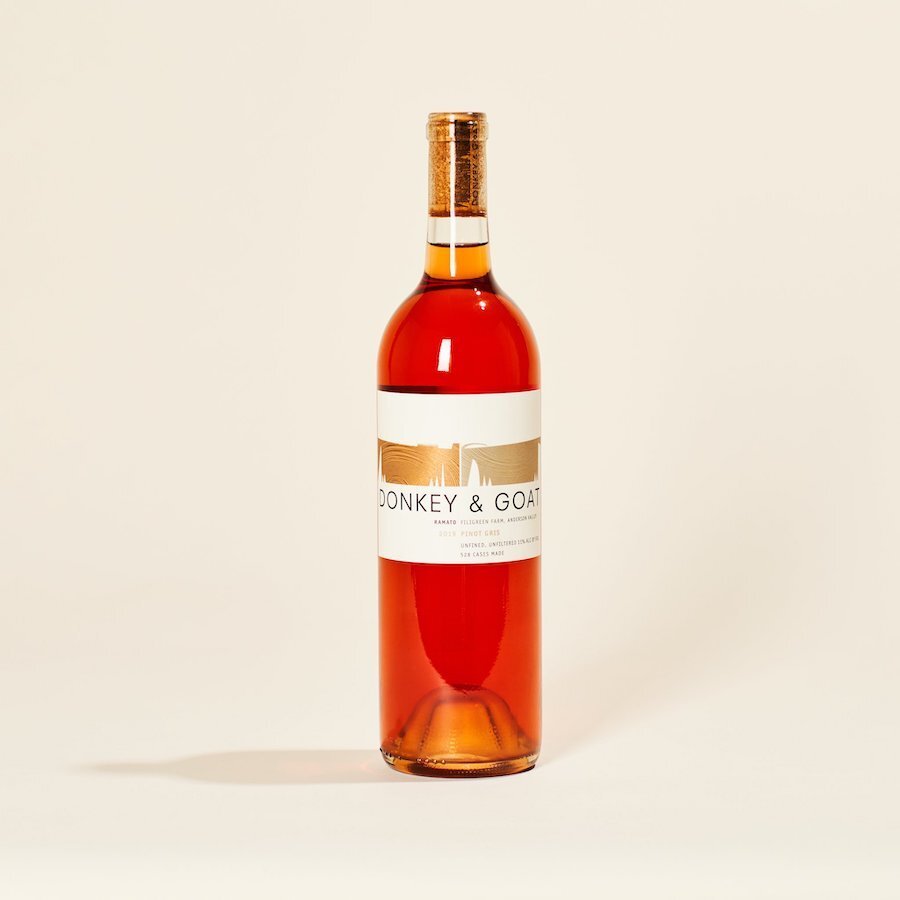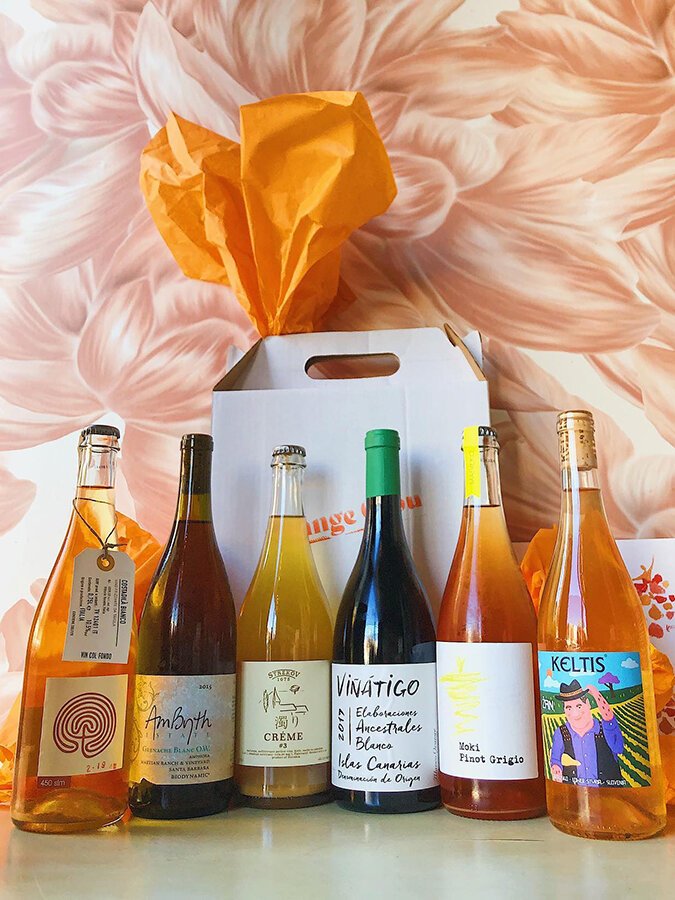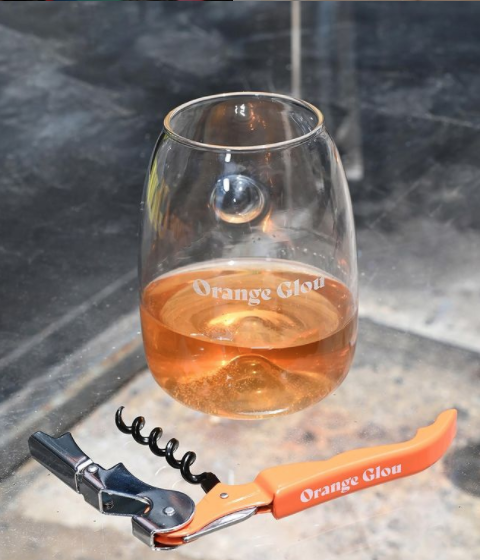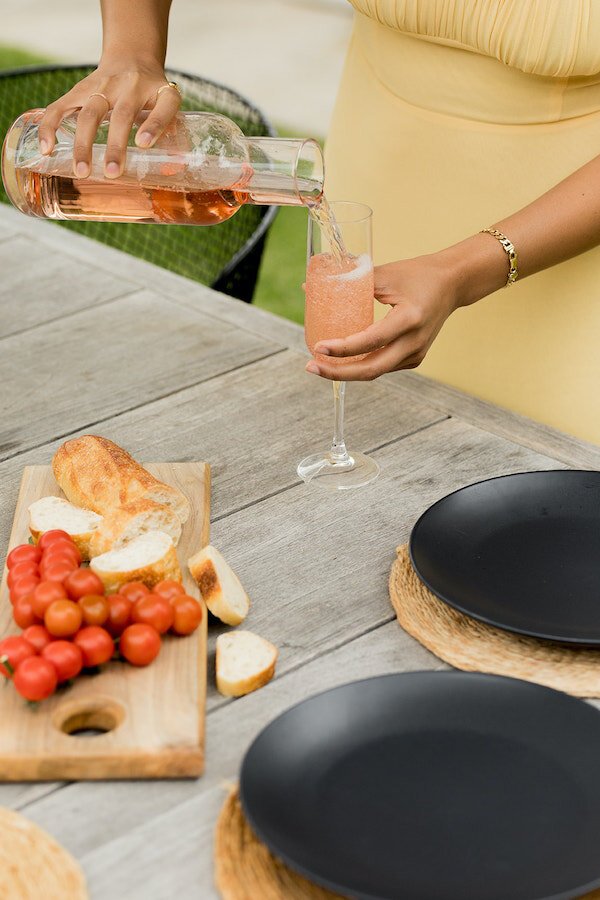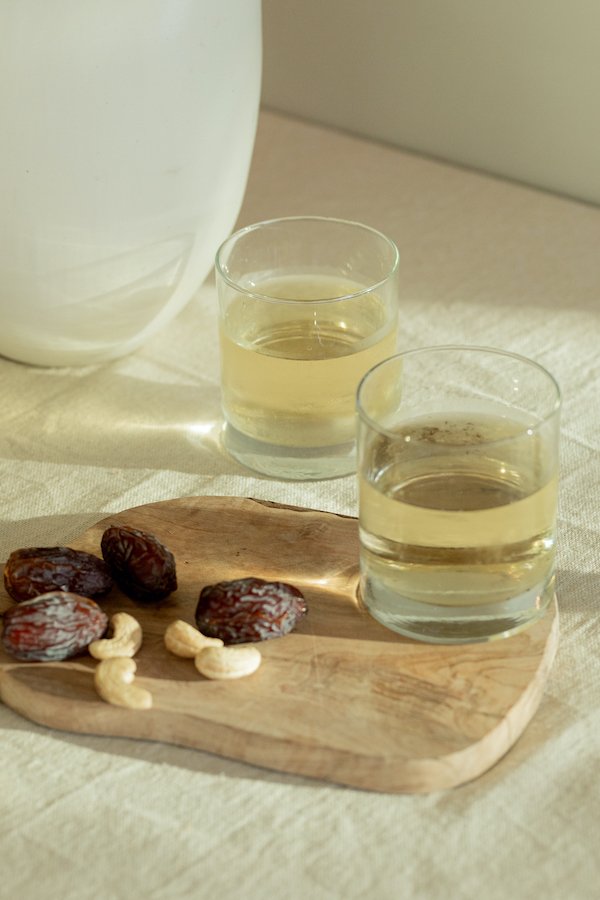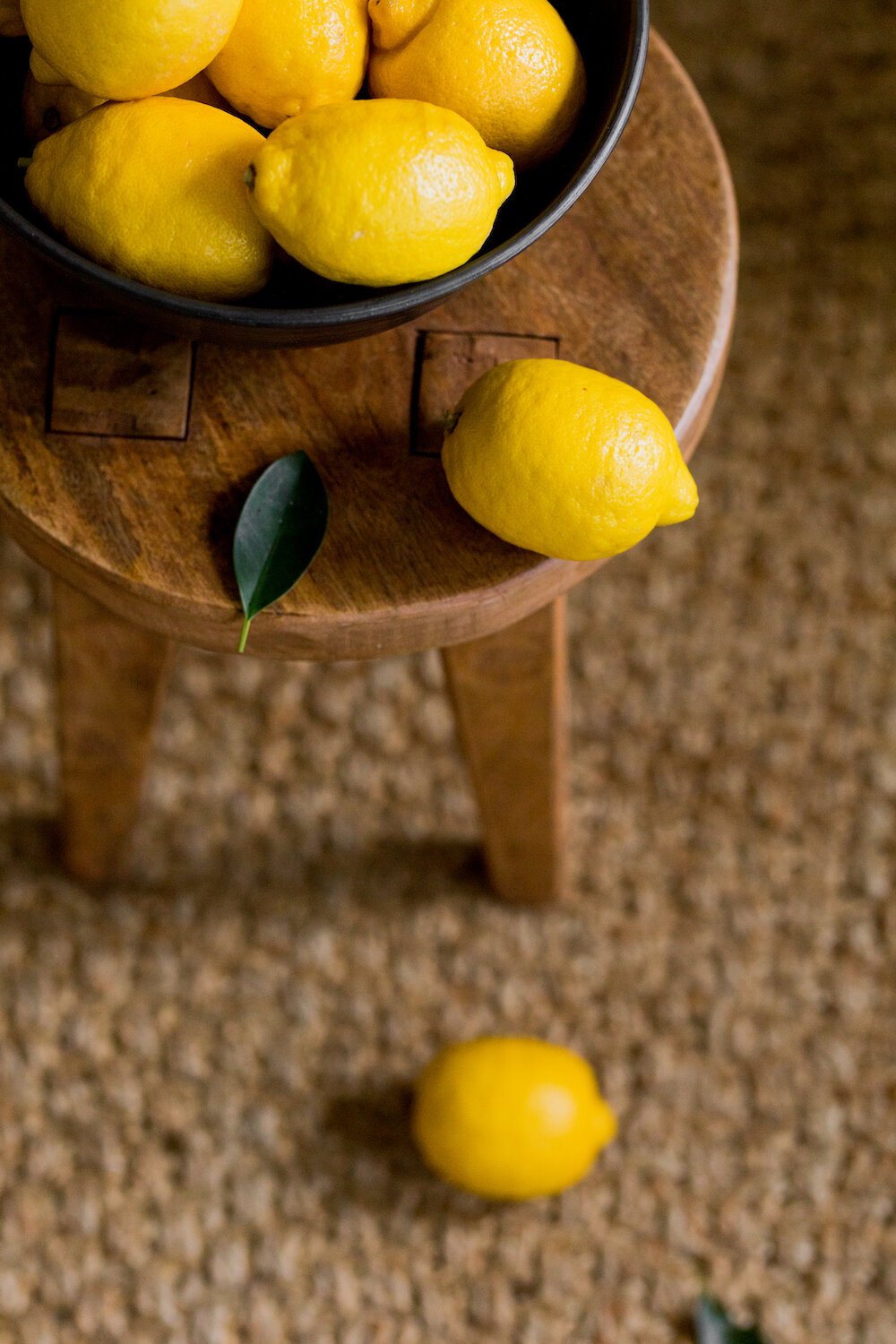
What Is Orange Wine? (Plus, Our Favorite Natural Labels)
White, Rosé, & Red. Where Does Orange Wine Fit?
As a wine pro, consumer, and hostess, I have a few wine obsessions: I love Pét-nat and prefer medium to high-acid white wines with texture. And orange wines perfectly fit the bill.
You may be thinking, “What the heck is orange wine? It must be wine made from oranges, right?” Nope! But don’t worry, I had the same thought at first. Fruit wine is a real thing and it can be tasty, but that’s not what we’re talking about here.
“Orange wines are just white wines that are made like reds.”
In simple terms, orange wines are skin-contact wines. In fact, it wasn’t until 2004, when British wine importer David A. Harvey coined “orange wine,” that the term gained popularity. In other words, orange wines are just white wines that are made like reds.
In white wine production, grapes are pressed, and the skins and stems are discarded right away, leaving only clear juice behind for fermentation. But with skin-contact wine, the winemaker allows the skins and seeds (called “must”) to have extended contact with the pressed juice in a method known as “maceration.” The grape skins contain pigment, flavor compounds, and tannins—all of which influence how the wine looks, tastes, and feels in the mouth.
Depending on the style the winemaker is looking to achieve (red, rosé, and orange wines are all skin-contact wines), maceration can be anywhere from a few hours to several months. The juice’s prolonged exposure to grape skins is what gives the wine a golden yellow, amber, or copper hue—and, voila! You have an orange wine.
The History Behind Skin-Contact Wines
Skin-contact wines are one of the world’s oldest winemaking methods. It all began in the country of Georgia as early as 6000 B.C. Traditionally, green grapes were crushed and fermented in an egg-shaped clay vessel, called qvevri, which was used for making, aging, and storing the wine. The qvevri was sealed and buried so the wine could ferment for at least five to six months, after which it was transferred to the bottle.
Wineries in Georgia and abroad continue to make orange wine using this traditional method—the qvevri wine-making method was even added to the UNESCO intangible cultural heritage list in 2013. But there are other ways to make orange wines, too. Neutral barrels, concrete, and stainless steel are popular vessels for fermentation and, while orange winemaking originated in Georgia, it is also made in Northeastern France, Northern Italy, Slovenia, Australia, and the United States.
What Does Orange Wine Taste Like?
There isn’t one singular tasting profile for orange wines—though they all have a complex and exciting texture because of the production. Orange wines express nuance; they can be aromatic and medium-bodied, to robust and full-bodied. It all depends on the varietal used, winemaking technique, and length of skin contact.
“Orange wines express nuance; they can be aromatic and medium-bodied, to robust and full-bodied.”
Typical tasting notes can include apricot, bruised apple, jackfruit, savory nuts, and dried flowers. Some orange wines also have a similar astringent feeling of oolong tea with the tartness of a sour beer.
Have you seen an orange wine that has a hazy hue? That’s an unfiltered wine! As consumers, we’re used to our whites and rosés having a shiny pallor. There’s nothing faulty if a wine is cloudy; it’s a hallmark that the winemaker left the wine in its raw state.
How Should I Serve It?
When orange wine is served too cold, the personality is muted. Use the wine’s color to help determine the serving temperature. For wine lighter in color, serve like you would a rosé. If it has a deeper hue, treat the wine as you would a chillable red—serve at 50 to 55 degrees. If you don’t have a wine fridge, you can simply pop the bottle into your refrigerator for 20 to 30 minutes.
“Because orange wine has the acidity of white wine and the body and structure of a red, it pairs nicely with a variety of foods.”
On the flip side, sparkling orange wines are best served well chilled. Drinking it at the right temperature will allow the complexity of the wine to show, and you’ll notice that it evolves significantly from the first to the last sip. Additionally, consider decanting deeper amber-colored wines. Like red wine, darker orange wines benefit from aeration, allowing the flavors and aromas to develop.
Because orange wine has the acidity of white wine and the body and structure of a red, it pairs nicely with a variety of foods. Try serving it with aged hard cheeses, spicy Jamaican dishes, or use an orange wine to play off the spice and kimchi flavors of your favorite Korean dishes. One of my favorite pairings is a lighter orange wine (four days of skin contact) with pizza topped with salami and arugula.
But Is Orange Wine “Natural”?
Natural wine is a philosophical approach to winemaking that emphasizes using organic or biodynamic grapes and native yeast fermentation. It also eschews conventional winemaking methods, such as the use of acid adjustors, coloring agents, and mechanical filtration.
While orange wine is a popular style within the world of natural wine, not all orange wines are “natural” since the skin-contact method can be applied in both natural and conventional winemaking practices.
Buying natural wine can be daunting. So here are a couple of tips for being a savvy shopper:
-
Find a good wine shop and ask the staff for their recommendations—they’ll love talking about their favorites and can point you to the organic, biodynamic, and natural wine options.
-
If you’re flying solo, the best tip (and one that I often use) is to shop by the importer. A wine importer will carry wines that meet their quality standard, style, and point of view. If you like one or two wines from a specific importer, you’re likely to enjoy others from their portfolio.
-
Look for “Imported By” on the back label and start taking note of who is importing your favorite bottles. Here are a few wine importers and distributors that I trust:
Orange Wines to Get You Started
Ready to try orange wine? Next time you’re at your local wine shop, look for bottles with the following terms: skin-contact, amber wine, or ramato. Or, try these orange wines from Mysa, a small natural wine store with delivery options:
Alternatively, if you like to be surprised by your wine, consider joining the Orange Glou Wine Club. Each month, you’ll receive natural orange wine with descriptions, tasting notes, vinification information and food pairings.
Remember, there is a style of skin-contact white wine for everyone—including orange wine! Sometimes it takes a bit of trial and error to find a bottle that’s up your alley. Hopefully, this quick primer helped you better understand this unique wine-making process. Cheers!
Whitney Pope is a natural wine sommelier based in Washington, DC. Through WHIT + WINE, Whitney educates consumers on the complicated topic of natural wine. Whitney has been featured in Glamour, SevenFifty Daily, Pix, and The Italian Wine Podcast. She recently moderated the Wines of Germany x VinExpo America panel “Germany Goes Green: Sustainability in the German Wine Industry.”
